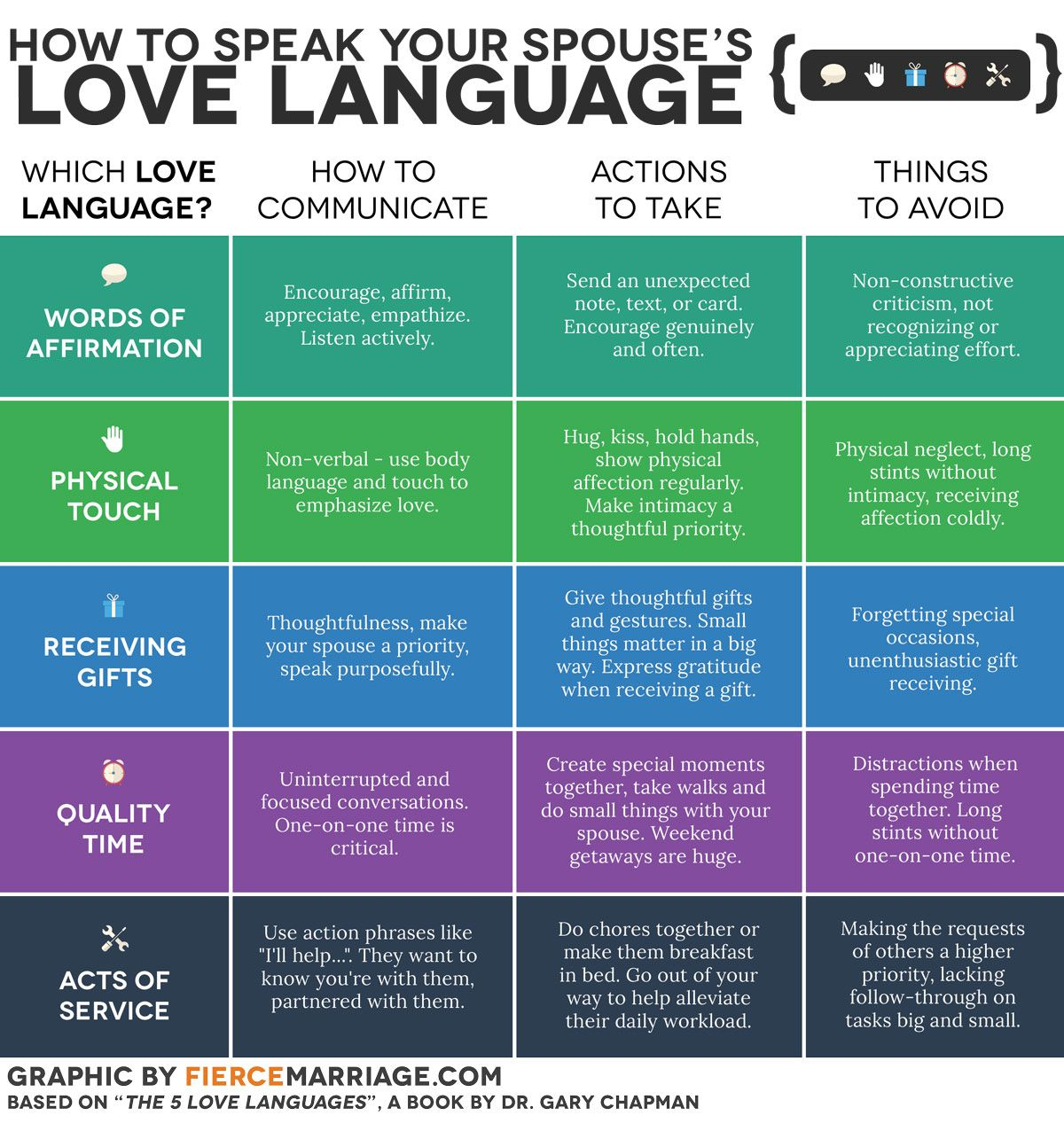The 5 Love Languages
Discover Your Love Language and Strengthen Your Relationships
 Have you ever wondered why some people feel more loved when they receive a gift, while others prefer quality time or acts of service? The concept of love languages can help you understand these differences and improve your relationships. Developed by Dr. Gary Chapman, the five love languages describe the different ways people give and receive love. By identifying your love language and that of your loved ones, you can create stronger and more fulfilling connections.
Have you ever wondered why some people feel more loved when they receive a gift, while others prefer quality time or acts of service? The concept of love languages can help you understand these differences and improve your relationships. Developed by Dr. Gary Chapman, the five love languages describe the different ways people give and receive love. By identifying your love language and that of your loved ones, you can create stronger and more fulfilling connections.
Take the Love Languages Quiz

- Words of Affirmation: This love language focuses on verbal expressions of love and appreciation.
- Quality Time: Spending undivided attention with your loved ones is the essence of this love language.
- Acts of Service: Actions speak louder than words for those who value acts of service.
- Receiving Gifts: This love language thrives on the thoughtfulness and meaning behind a gift.
- Physical Touch: For individuals with this love language, physical touch is the ultimate display of love and affection.
By understanding your own love language and that of your partner, you can tailor your gestures of love and affection to strengthen your bond.
The 5 Love Languages for Kids
 The concept of love languages is not limited to adults – children also have their unique ways of giving and receiving love. To foster healthy relationships with your children, it’s important to understand their love languages. The five love languages for kids include:
The concept of love languages is not limited to adults – children also have their unique ways of giving and receiving love. To foster healthy relationships with your children, it’s important to understand their love languages. The five love languages for kids include:
- Words of Affirmation
- Quality Time
- Acts of Service
- Receiving Gifts
- Physical Touch
Encouraging your children in their preferred love language will help them feel loved and supported.
Implementing Love Languages in Your Daily Life
 Now that you understand the concept of love languages, it’s time to put this knowledge into practice. Here are a few practical ways to implement love languages in your daily life:
Now that you understand the concept of love languages, it’s time to put this knowledge into practice. Here are a few practical ways to implement love languages in your daily life:
- If your partner’s love language is words of affirmation, make it a habit to express your love and appreciation through verbal compliments and praise.
- For individuals who value quality time, plan activities where you can give them your undivided attention, such as a date night or a walk in the park.
- Acts of service can be as simple as preparing a meal, doing household chores, or helping with their workload to show your love.
- If receiving gifts is their love language, surprise them with thoughtful presents that hold significance and meaning.
- Physical touch can be shown through hugs, kisses, and other forms of non-verbal affection that make your loved ones feel cherished and secure.
Remember, implementing love languages requires consistent effort and communication. As you incorporate these practices into your relationships, you will likely see an improvement in the quality and depth of your connections.
Whether you are in a romantic relationship, have children, or want to strengthen your connections with friends and family, understanding and using the five love languages can transform your relationships. So why wait? Discover your love language and start speaking the language of love that resonates the most with your loved ones!